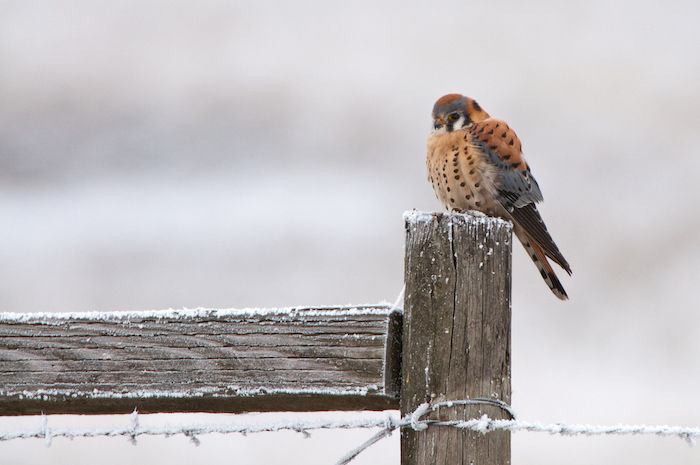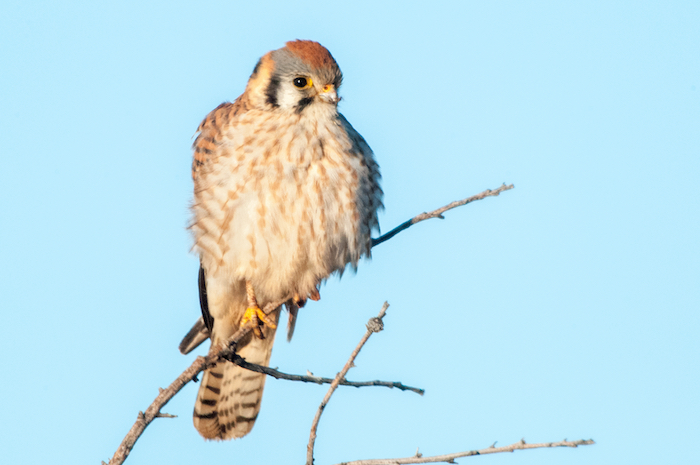
American Kestrel Male
American kestrels are striking, with burnt-red backs and tails, steel-blue wings on the males, and bold falconid markings, black and white on the face. All this is packaged into a little hawk that could perch on your finger, and can inspire fascination in children and their attentive elders. And these rainbow dynamos are pretty to watch in action, too.

American Kestrel Female
They will leap from a field-side post or overhead wire and flap forward until, spotting possible prey, they will fly in place, maybe twenty feet in the air, awaiting the chance to strike. Their prey may be a grasshopper or spider; or perhaps a vole. Vole trails are decked with their rodent urine, making pathways to dinner that kestrels see clearly with their UV vision.
Kestrels do not truly hover, as they cannot flip their wings over like hummingbirds in front of a flower, but they face into the wind and flap at an angle to hold their heads motionless, able then to discern the important motion below them. Their descent to that prey is not a peregrine dive but rather a wing-raised drop, ending, the bird hopes, in clutching a meal with its noodle-thin but wire-strong talons.
The kestrel may dine right there on the ground, or carry the meal to a higher perch. It may stash extra food in a handy clump of grass for later consumption. Or it may feed its hungry chicks.
Kestrels nest in cavities, where for a month the male brings food to the female while she incubates four or five eggs. Both parents then feed their nestlings for another month, when the young fledge. At that point, if food is abundant, the female may start a second clutch. The male will continue to feed both the fledglings and his mate.
Many songbirds are able to keep a relatively clean nest. Their young defecate in fairly dry packets that parent birds can lift and remove. Kestrel nestlings, alas, release a more liquid poop; but they do, at least, raise their tails and squirt against the cavity walls, keeping their nestling area as clean as possible.
Kestrels live year-round along open country across most of the US. Some migrate, to nest as far north as Alaska and winter as far south as Panama. Older folks may remember them as the common “sparrow hawk” of farms and fields, but over the last fifty years American kestrel numbers have dropped by half as other Americans have paved and built on the fields, sprayed pesticides that have killed their prey, and cleared old cavity-bearing trees that provided nesting sites.
But Americans can offset these losses, too. To help counter the habitat change, you can put out nesting boxes for kestrels and other birds. Construction directions can be found at nestwatch.org; click “All About Birdhouses.” Do it now, and then see who comes along in the spring!

No comments yet.